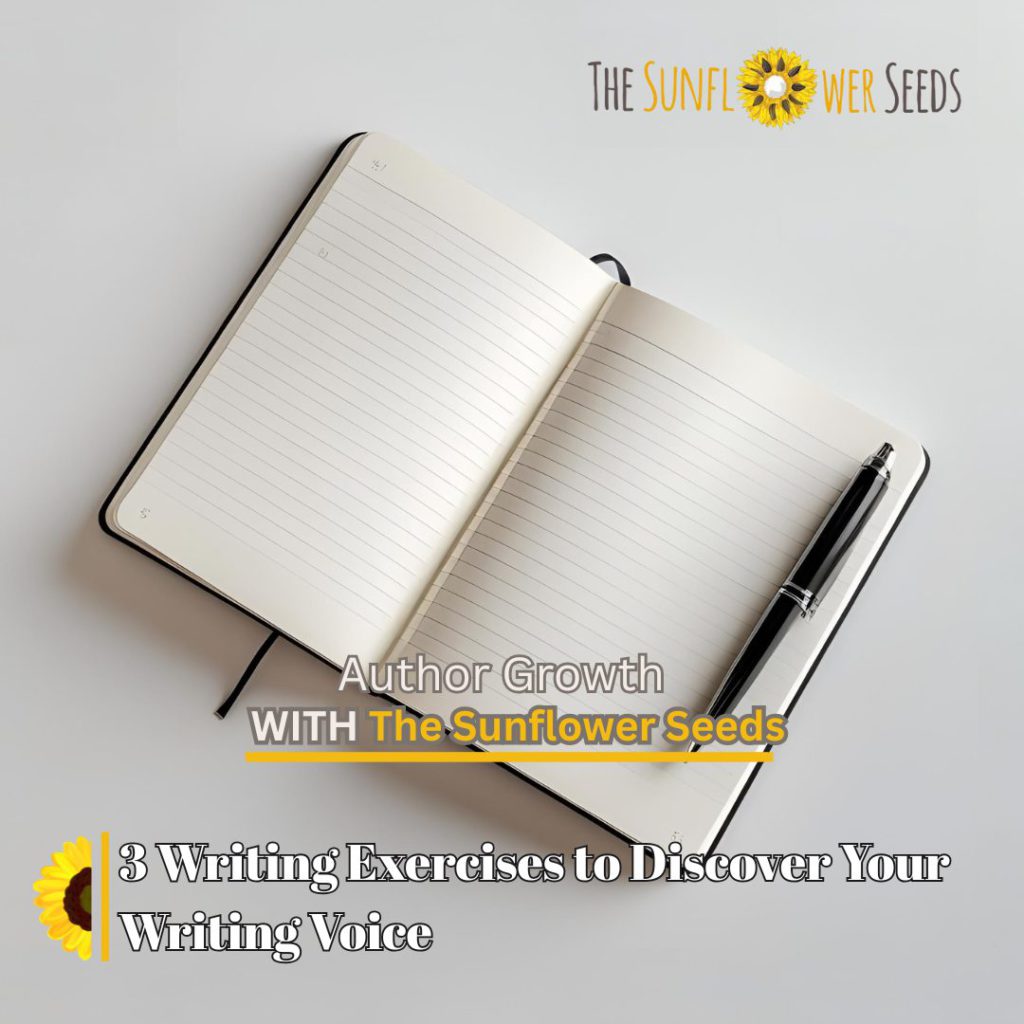3 Writing Exercises to Discover Your Writing Voice
Every writer has a voice — distinct, resonant, and completely their own. Yet for many, figuring out what that voice is can feel like finding a needle in a haystack. You might wonder, How do I know if I’ve discovered my writing voice? If you’re stuck sounding like everyone else, don’t worry — this is common, and the good news is: your voice is not missing, just unexplored.

In this blog, we bring you 3 practical and creative writing exercises to help you discover your writing voice — the one that feels authentic, effortless, and uniquely yours.
🖋️ What Does “Writing Voice” Mean?
Your writing voice is not your writing style or your tone — though all these are interconnected. Voice is that unmistakable fingerprint that makes your writing yours. It’s your rhythm, word choice, perspective, and energy — the personality on the page. Whether you’re blogging, writing fiction, or even crafting captions, your voice builds trust, connection, and recognizability.
If you’re wondering how to begin the journey to discover your writing voice, the following exercises will help you dive inward and reflect outward.
✍️ Exercise 1: Write a Letter to Your Younger Self to Discover Your Writing Voice
This powerful exercise brings emotion and memory into your writing — key components of voice.
How to Do It:
- Choose an age (e.g., 10, 18, 25).
- Write a one-page letter to that version of yourself.
- Don’t overthink sentence structure — just feel and write.
- Read it aloud when you’re done.
What It Teaches You:
This helps you notice your natural tone — warm, witty, bold, vulnerable? That’s your voice peeking through. Writers who do this often find unexpected clarity and emotional resonance.
🔑 Use this as a recurring practice to slowly unearth and discover your writing voice as it grows with you.
✍️ Exercise 2: Bring a Mundane Object to Life Using Your Writing Voice
Choose something ordinary — a pen, a spoon, your coffee mug — and write about it like it matters. Pretend you’re pitching it to someone who’s never seen it before.
Why It Works:
This forces you to infuse personality into something neutral. You’ll stretch your language, creativity, and sentence rhythm.
Try to exaggerate or inject humor. Or maybe get poetic. This contrast between content and voice is a powerful way to discover your writing voice and how you naturally bring life to a subject.
✍️ Exercise 3: Rant with Heart – Let Your Writing Voice Flow Freely
Write a paragraph on something that irks you or something you deeply love — without editing yourself. Whether it’s about overpriced coffee or the silence of early mornings, write it unfiltered.
Why It Helps:
When you’re emotionally invested, your voice comes alive. The rhythm, sentence length, and even punctuation become more you.
Once you’ve written it, highlight words and phrases that feel exactly like you’d speak. That’s your voice. Practicing this weekly can be a long-term way to discover your writing voice and refine it into something intentional.
Final Thoughts: Voice Is a Journey, Not a Destination
Remember, the quest to discover your writing voice isn’t about sounding like your favorite author. It’s about sounding like you — whether that’s bold, poetic, humorous, reflective, or a mix of it all. These exercises aren’t meant to give you answers overnight, but to guide you inward until your voice reveals itself — naturally and confidently.
Start small. Be consistent. And soon, your readers will know it’s you — even without seeing your name.
🌻 At The Sunflower Seeds, we help authors find their voice and share it with the world — through stories, strategy, and strong beginnings.


